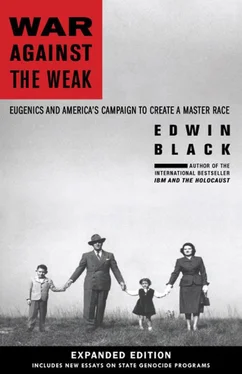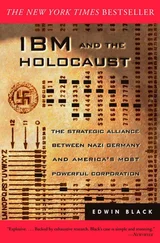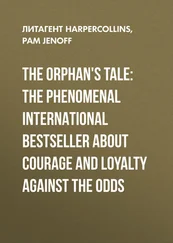Edwin Black - War Against the Weak
Здесь есть возможность читать онлайн «Edwin Black - War Against the Weak» весь текст электронной книги совершенно бесплатно (целиком полную версию без сокращений). В некоторых случаях можно слушать аудио, скачать через торрент в формате fb2 и присутствует краткое содержание. Город: Washington, DC, Год выпуска: 2012, ISBN: 2012, Издательство: Dialog Press, Жанр: История, на английском языке. Описание произведения, (предисловие) а так же отзывы посетителей доступны на портале библиотеки ЛибКат.
- Название:War Against the Weak
- Автор:
- Издательство:Dialog Press
- Жанр:
- Год:2012
- Город:Washington, DC
- ISBN:1-56858-258-7
- Рейтинг книги:3 / 5. Голосов: 2
-
Избранное:Добавить в избранное
- Отзывы:
-
Ваша оценка:
- 60
- 1
- 2
- 3
- 4
- 5
War Against the Weak: краткое содержание, описание и аннотация
Предлагаем к чтению аннотацию, описание, краткое содержание или предисловие (зависит от того, что написал сам автор книги «War Against the Weak»). Если вы не нашли необходимую информацию о книге — напишите в комментариях, мы постараемся отыскать её.
War Against the Weak — читать онлайн бесплатно полную книгу (весь текст) целиком
Ниже представлен текст книги, разбитый по страницам. Система сохранения места последней прочитанной страницы, позволяет с удобством читать онлайн бесплатно книгу «War Against the Weak», без необходимости каждый раз заново искать на чём Вы остановились. Поставьте закладку, и сможете в любой момент перейти на страницу, на которой закончили чтение.
Интервал:
Закладка:
When the limit of re-absorption of the deported masses was reached, special “population control” measures were to be undertaken. Five measures were cited: 1) Migration Control “to enforce deportation”; 2) Marriage Restriction; 3) Sterilization; 4) Segregation and Incarceration “for the prevention of their living again in their handicapped offspring in the next generation,” which would necessitate confinement camps; and 5) Euthanasia. Laughlin explained, “In some communities ‘mercy death’ has been advocated in certain extreme cases… but the modern American state has not yet worked out ‘due process of law’ nor has it yet decided on who should sit in judgment.” The final report added, “The legality and protection finally found in the eugenical sterilization laws after twenty years of experimental legislation gives some hope that a similarly sound basis for euthanasia might be worked out… for states or communities which desire it.”
Reciprocal “treaties” would be engineered with like-minded eugenic advocates in the legislatures of Connecticut and alien-recipient states using the robust interstate cooperation model perfected during the quest to achieve mass sterilization. To that end, on page 66, in a section headed “Needed Researches,” project 8 “Euthanasia—Mercy Death,” the task was set forth: “Compile and analyze all past and existing statues of all nations which bear upon the subject.”
Euthanasia had been the holy grail of eugenics since the movement’s inception at the end of the nineteenth century. In 1906, the first state euthanasia law was introduced in the Ohio legislature, but defeated. A leading eugenicist described the proposal as Ohio’s attempt to “murder certain persons suffering from incurable disease.” Iowa considered a similar measure. In 1911, the leading pioneer eugenicists, supported by the US Department of Agriculture, the American Breeders Association, and the Carnegie Institution, met to propound a battle plan to create a master race—a race of white, blond, blue-eyed Americans devoid of “undesirables.”
Point eight of the Preliminary Report of the Committee of the Eugenic Section of the American Breeders Association to Study and to Report on the Best Practical Means for Cutting Off the Defective Germ-Plasm in the Human Population specified “euthanasia.” Of course, euthanasia was merely a euphemism—actually a misnomer. Eugenicists did not see euthanasia as a “merciful killing” of those in pain, but rather a “painless killing” of people deemed unworthy of life. The method most whispered about, and publicly denied, but never out of mind, was a “lethal chamber” utilizing gas. Laughlin became a strident advocate for such killing from the outset. Indeed, advocacy for eugenicide was widespread and ceaseless in the eugenic literature and echoed in the formal proposals of various state welfare officials across the country.
Among the many ancestral states long under particular scrutiny for their Appalachians and freed slaves were Kentucky, Indiana, Virginia, and North Carolina. These were to receive thousands of Connecticut’s deportees. If the notion spread, similar deportation policies would be adopted by other states.
The plan took its first step with mass registration of nearly all 2,190 citizens of the town of Rocky Hill, Connecticut. About half of them were fingerprinted.
But the mass deportations, recipient-state incarceration camps, and euthanasia mills never happened. Within weeks of the plan’s launch in Rocky Hill, Governor Cross lost the 1938 election. With Cross out of office, Laughlin’s entire project was quietly abandoned. World War II broke out in 1939. Nazi atrocities and eugenic fascism shocked the world. After World War II, as the smoke cleared from millions murdered in the name of racial supremacy, international law officially declared that hampering reproduction of any ethnic group constituted “genocide.”
After World War II, most states drastically curtailed or abolished their eugenic campaigns and sterilization programs—but not North Carolina. Many North Carolinians were still targeted for bloodline termination because of their poverty, ancestry, or appearance. The prospect became a passion for hold-out eugenicists across the nation. They found common cause with confirmed eugenicists in several of North Carolina’s best universities. Several leading doctrinaire eugenicists found a home at Bowman Gray School of Medicine, now known as Wake Forest University School of Medicine. The school hosted the first department of medical genetics in America. These eugenicists included Dr. William Allan and Dr. Nash Herndon, both senior members of the genetics faculty. Allen had been an unrepentant race eugenicist for decades and throughout the Nazi era. He was a leader in the Eugenics Research Association and an international giant of medical genetics. Herdon, who succeeded Allan, served as president of the American Eugenics Society and helped to found North Carolina’s Human Betterment League.
Since both professors were rabid eugenicists, they attracted the support of Wycliffe Draper, an unabashed Nazi enthusiast and heir to a New England textile fortune. Draper donated money to Bowman Gray School of Medicine. “In 1950,” according to a confidential university investigation, “Draper made a gift of $40,000 in response to a proposal by Dr. Herndon to conduct a genetics study of an all-white North Carolina mountain population. The research focused on groups of geographically isolated mountain families, who tended to have defined concentrations of certain genetic traits and were thus of significant interest to medical genetics researchers. In 1951, Draper made an additional $40,000 grant for this project.” Among Draper’s stipulations for additional funding, he demanded that “the department not officially advocate interracial marriage.” The school agreed to the conditions, according to the report, and eventually, Draper granted an additional $100,000.
According the university report, further funding was to be contingent upon three provisos: “1) To seek to have race and immigration laws maintained, enforced, and strengthened; 2) To justify (explore) by scientific research the attitudes they reflect; 3) To explain and defend these attitudes by teaching and publicity.” In other words, the new Draper grants would establish the school as a prestigious outpost of racial eugenics. It is unclear if Draper paid any additional monies.
Others around the nation rallied to North Carolina’s eugenic crusade.
Racist Massachusetts financier Clarence Gamble, heir to the Proctor and Gamble fortune and a Nazi zealot, donated large sums to finance research and individual sterilizations as well as related state efforts. Gamble believed that most of North Carolina’s unfit were still roaming free of institutions—and needed to be apprehended. In a 1951 article for the North Carolina Medical Journal, Gamble wrote, “There are undoubtedly more persons outside of institutions for whom the operation [sterilization] is appropriate than there are within.” In that article, Gamble calculated, “the 468 sterilizations of the last biennium will mean 390 fewer feebleminded North Carolinians, an important accomplishment of this public health procedure.” It was always about population control.
Throughout the 1960s and 1970s, sterilizations continued at a startling pace. Some 8,000 were approved, and about 7,600 were actually performed, the last circa 1973. This systematic action was taken in spite of the fact that the term genocide was actually developed in North Carolina by Raphael Lemkin, on the campus of Duke University, during the Holocaust era. Lemkin identified interfering with births as one of the five major crimes of genocide. North Carolina knew the thick red line they had crossed.
Читать дальшеИнтервал:
Закладка:
Похожие книги на «War Against the Weak»
Представляем Вашему вниманию похожие книги на «War Against the Weak» списком для выбора. Мы отобрали схожую по названию и смыслу литературу в надежде предоставить читателям больше вариантов отыскать новые, интересные, ещё непрочитанные произведения.
Обсуждение, отзывы о книге «War Against the Weak» и просто собственные мнения читателей. Оставьте ваши комментарии, напишите, что Вы думаете о произведении, его смысле или главных героях. Укажите что конкретно понравилось, а что нет, и почему Вы так считаете.












